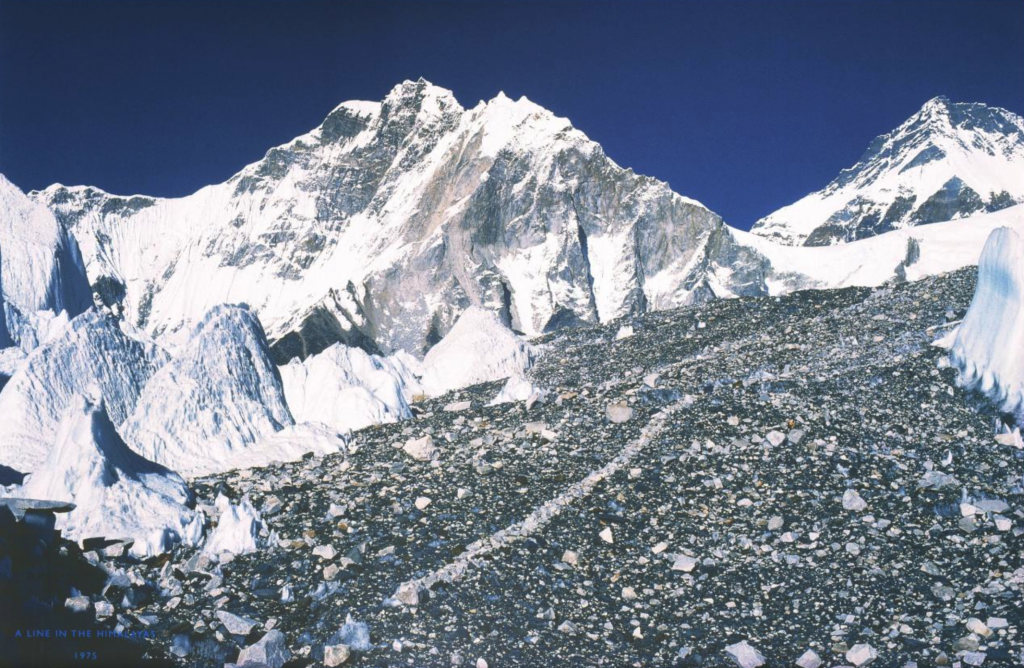
Richard Long, A Line Made by Walking (1967)
- Left a trace
- Art made by walking
- it was a fundamental interruption of art history: anticipates a widespread interest in the performative
This formative piece was made on one of Long’s journeys to St Martin’s from his home in Bristol. Between hitchhiking lifts, he stopped in a field in Wiltshire where he walked backwards and forwards until the flattened turf caught the sunlight and became visible as a line. He photographed this work, and recorded his physical interventions within the landscape.
Although this artwork underplays the artist’s corporeal presence, it anticipates a widespread interest in performative art practice. This piece demonstrates how Long had already found a visual language for his lifelong concerns with impermanence, motion and relativity.
Gallery label, May 2007
“Thus walking—as art—provided a simple way for me to explore relationships between time, distance, geography and measurement. These walks are recorded in my work in the most appropriate way for each different idea: a photograph, a map, or a text work. All these forms feed the imagination.” − Richard Long
